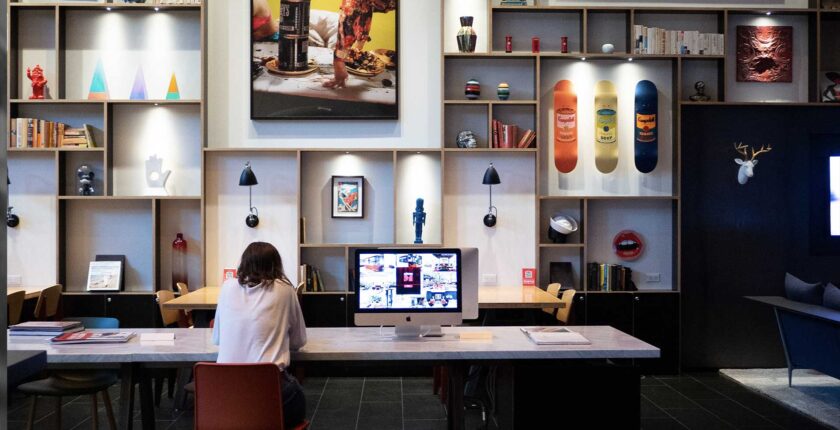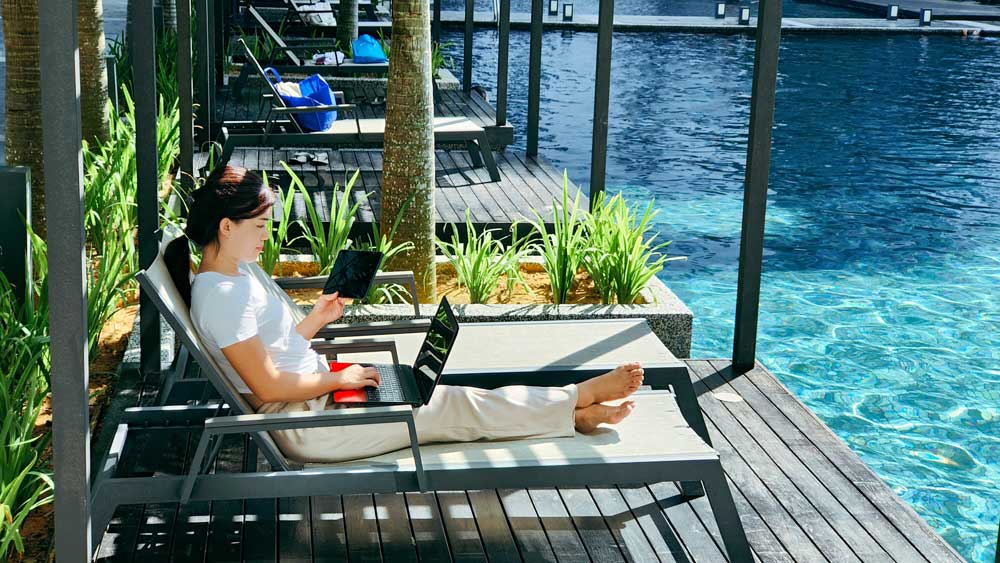The Reality of Remote Design Work in Australia.
There are many reasons to consider remote design work for an Australian company. The ability to work from anywhere in the world, set your own hours, and enjoy a high level of creative freedom are just a few of the many benefits. And with the recent global pandemic, many companies are now offering remote work options to their employees.
High Australian salaries and attractive benefits are also a big drawcard for foreign designers looking to break into the Aussie job market.
There are many different types of remote design work available, from web and graphic design to user experience (UX) and user interface (UI) design. And with the rise of digital nomads, more and more companies are open to hiring foreigners for remote positions. However, it’s important to be aware of the legal implications of working remotely as a foreigner in Australia. Make sure you have the proper visas and work permits in place before beginning any job search.
In this article, we’ll explore the pros and cons of working remotely as a designer for an Australian company. We’ll also discuss the types of design jobs that are available remotely, which companies are hiring and what the legal ramifications are.
Outline
- The pros and cons of working remotely as a designer for an Australian company
- The types of design jobs that are available remotely
- Which companies are hiring foreigners for design jobs
- The legal ramifications of working remotely as a designer for an Australian company
- The rise of remote workers in Australiabreak into the Aussie job market
The pros and cons of working remotely as a designer for an Australian company
Pros:
- The ability to work from anywhere in the world
- Set your own hours
- Enjoy a high level of creative freedom
- No need to commute
- Increased flexibility and freedom
- High Australian salaries and attractive benefits
Cons:
- May feel isolated from team members
- Can be difficult to stay focused and motivated
- Time zone differences can make communication challenging
- You may need to invest in additional equipment or software
- There is potential for lower pay than if you were working on-site
So, at the end of the day it comes down to what you value in a job. It is up to you to weigh up the pros and cons, to determine whether remote work is the right fit for you.
Here are some tips for effectively working at home in a remote role.
Remote design jobs available
If you’re interested in finding a remote job as a designer, there are many options available. Here are a few of the most popular types of remote design jobs:
- Graphic Designer
- UX/UI Designer
- Motion Graphics Designer
- Illustrator
- Branding Specialist
There are many companies that are hiring foreigners for remote design jobs as well as a number of reputable freelance platforms commonly used by Australian businesses. Recently, we’ve seen full-time remote design positions offered at Australian companies like Canva, Atlassian, and Envato, just name a few.
By the same token, Australians seeking remote design jobs at foreign companies is also on the rise with international corporations like Google, Amazon and Facebook leading the pack in remote job postings. This year alone, these big tech companies have hired over 1,000 remote workers in Australia.
If you’re looking for remote design work, be sure to search for job postings that specifically state that the position can be done remotely. You can also reach out to companies directly and inquire about remote work options. Never assume an employer will be open to the idea of filling a position with a remote employee. Responding to every design job listing with a remote work proposal is not advisable as it can come across as unprofessional and waste employer’s time.
The legal ramifications of working remotely as a designer for an Australian company
As a foreign citizen planning on working remotely as a designer for an Australian company, there are a few things to keep in mind from a legal standpoint:
First, your employer will need to obtain a work visa for you if you’re not already an Australian citizen or permanent resident. This involves a lengthy and complex application process, so it’s important to start the visa application process as early as possible.
Second, you’ll need to have a contract in place that outlines the terms of your employment, including your salary, benefits, and working hours. It’s important to have a lawyer review your contract before you sign it to make sure that you understand all of the terms and conditions.
Finally, you should be aware of your rights and responsibilities as an employee, which are governed by Australian law. For example, you have the right to receive paid annual leave, sick leave and protection from discrimination and sexual harassment. You’ll also need to comply with local taxation laws and make sure you’re paying your taxes correctly.
Do the same visa requirements apply to remote employees overseas?
Yes, the same Australian visa requirements apply to remote employees working overseas. Your employer will need to obtain a work visa for you if you’re not already an Australian citizen or permanent resident. This involves a lengthy and complex application process, so it’s important to start the visa application process as early as possible.
Make sure to seek legal advice from an immigration professional and refer to the Australian government’s work visa guidelines which can be found online at https://www.border.gov.au/Trav/Work
The rise of remote workers in Australia
There have been a number of studies conducted into the rise of remote workers in Australia. A recent study by the Freelancer & Contractor Services Association (FCSA) found that the number of remote workers in Australia has increased by 14% over the last two years.
The study found that the most popular reasons for working remotely are to avoid the daily commute ( cited by 54% of respondents) and to have a better work/life balance (cited by 53% of respondents). Other reasons given include the ability to take on work outside of normal office hours (cited by 32% of respondents) and to work from home to save on childcare costs (cited by 26% of respondents).
The study also found that the remote working trend is most popular among Millennials, with 61% of respondents aged 18-34 working remotely at least some of the time. This is followed by Gen Xers ( aged 35-54) at 57% and Baby Boomers (aged 55+) at 41%.
The FCSA study also found that remote work is most common among workers in the information technology (IT) and telecommunications industries (39%), followed by professional, scientific and technical services (38%).
A separate study conducted by remote work platform We Work Remotely found that the number of remote job postings on their site has increased by 63% over the last two years.
The rise in remote work has been attributed to a number of factors, including the increasing popularity of remote working tools and the growing acceptance of remote work by employers.
Conclusion
Overall, remote work is a great option for designers who are looking for flexibility and the ability to work from anywhere in the world. Foreigners hoping to enter the Australian workforce may also find remote work to be a great stepping stone into the local job market. However, it’s important to be aware of the legal implications of working remotely as a designer for an Australian company and make sure you have all the necessary paperwork in order before starting your new job.






